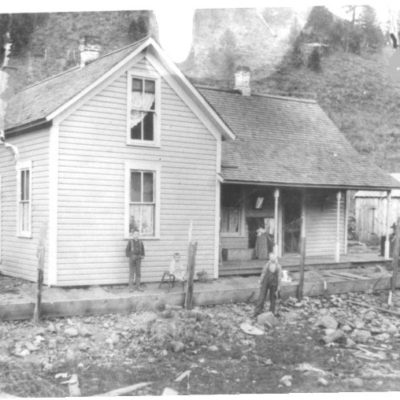Amish

Introduction
The Amish are considered to be conservative Protestants and most Amish consider themselves Anabaptists. Their ancestry comes from the Mennonite community. The Amish and the Mennonites were both a part of the Anabaptist movement in Europe during the time of the Reformation and were considered heretics by the Catholic and Protestant Churches. Many of the Anabaptists were put to death, while some fled to Switzerland and to the south of Germany to escape persecution.
The Anabaptists believe only adults confessing their faith should be baptized and should remain separate from the larger societies of religions. The Amish and other Anabaptists believe that a child cannot have a complete understanding of the Things of God and therefore should not be baptized. The name Anabaptist means rebaptizer.
All Amish children are expected to follow the will of their parents in all facets of life. It is not until they come of age that they may lead a lifestyle of their own choice. It is possible to not join the church and live in the Amish society. There are different Amish congregations that hold different interpretations of the rules of joining and keeping in contact with family members who do not choose to live in the Amish communities. The majority of the members are born and raised in the faith of the Amish communities. Converts from outside of the Amish communities are extremely rare. The Amish groups are experiencing several inherited disorders due to the restricted gene pool and intermarriages.
The Amish hold all their worship services in their homes, participating in farming activities to provide the sustenance for their families. They place a great importance on family, humility, community, and separation from the world.
There are twenty-two states in the United States and Canada where Amish live in their close-knit communities. The largest of these communities are in Lancaster Country, Pennsylvania, and Holmes County, Ohio. It is estimated that there are 228,000 Amish in the United States and about 1500 in southwestern Ontario, Canada. There are some Amish in Central America in a community near San Ignacio, Belize.
The four orders of Amish are the Swartzengruber, the Old Order, Andy Weaver, and the New Order of Amish. The most common of the Amish communities are the Old Order Amish. All communities operate independently from each other. The most conservative and strictest is the Swartengruber Amish and the second most conservative and strictest is the Old Order Amish. The Andy Weaver Amish are progressive and the New Order Amish are considered the most progressive.
History
Menno Simons
Menno Simons was born in 1496 and died in 1561. He was a Catholic priest living in the Rhein Lowlands, when he joined the Anabaptist movement. Menno Simons was a Dutch Roman Catholic priest before his conversion to Anabaptism in 1536. Simons renounced his Catholic faith and his office as a priest. Soon he received a following based upon his leadership and his writings. Menno Simons taught that Jesus did not take the flesh from his mother, but either brought his body from heaven or had body made for him by the speaking of God’s Word. The Anabaptists were accused of denying the Incarnation of Christ. Menno Simons wrote the 1623 Mennonite Dordrecht Confession of Faith. Those who followed Menno Simons became known as the Mennonites. The Anabaptist condemns oaths, and disagreed that disputes between believers and non-believers should be handled by courts of law. Anabaptist followers under Menno Simons believe they may not bear arms or offer aggressive confrontation to wrongdoers, nor carry swords. It is also thought that Anabaptist believers should avoid participating in civil government because that activity belongs to the world; thus, Anabaptist believers may not hold public office. Those who are sinners or unfaithful must be excommunicated. Those that are excommunicated must be excluded from taking the sacraments and having any contact with those whom remain believers.
Jacob Amman
Jacob Amman was born in 1656 and died in 1730 as a Swiss Mennonite. The Swiss bishop, Jacob Amman, broke from the Mennonite church somewhere around early 17th century. He started his own following and they called themselves Amish. Jacob Amman believed the Mennonites were not following the teachings of Menno Simons and his 1623 “Mennonite Dordrecht Confession of Faith.” He did not approve of the negligence of the ban on believers who would not terminate contact with non-conforming members of the Mennonite society. Amman insisted on the ban. A banned member was expected to repent of his non-conforming behavior.
The Amish started as a reform group within the Mennonite movement in the late 17th century. The separation between the Amish and the Mennonites occurred because it was perceived there was a lack of discipline among the Mennonites. The Amish who split from Mennonites lived in Switzerland and in the southern Rhine river region in Germany.
There have been many times these two groups have disagreed on their practice of their religion. They hold opposing views on what dress code should be enforced for worship, the allowance of technology, the language to speak, and the interpretation of the Bible. They do however share the same beliefs concerning separation, baptism, and basic Bible doctrines.
Lifestyle
Amish clothes encourage humility and separation from the world; their clothing becomes an expression of their faith. The Amish believe their women and girls should dress modestly in fabric of solid colors to not draw attention to themselves. The women and girls dresses should have long sleeves and full skirts to cover their knees. There are some Amish communities that prohibit buttons and only allow hooks and eyes to close clothing. Amish women wear aprons and their heads are covered with prayer coverings. They never cut their hair and their hair is tied in buns. The prayer head coverings vary between married women and single girls; black prayer head coverings signify married women and single girls usually wear white. Amish women are not allowed to wear jewelry. Men and boys wear dark-colored suits, straight-cut coats without lapels, broad fall trousers, and suspenders. Their shirts are also a solid color, their shoes and socks are always black and upon their head they wear either a black hat or a straw brimmed hat. Married men grow beards while single men are not allowed to even have mustaches and remain clean shaven. There are some communities who do allow young unmarried men to grow a beard after he has been baptized.
Late in the 18th century many Amish migrated to the United States. The Amish and Mennonites both settled in Pennsylvania as part of William Penn’s holy experiment of religious tolerance. They originally settled in Pennsylvania with the first sizable group of Amish arrived in Lancaster County in the late 17th century and early 18th century. Other Amish immigrants established communities in New York, Illinois, Ohio, Mississippi, Indiana, Missouri, Iowa, Michigan, Nebraska, Wisconsin, Minnesota, Maine, even Canada, all preserving the farming practices of the old Amish.
Belief
The Amish are considered a conservative Christian faith group. The Amish have implemented the traditions of the Anabaptist and share some Evangelical and Fundamentalist churches. The Amish believe that Salvation is by grace for God and that it is an unmerited gift from God and that it is an everyday occurrence. Amish do not believe that everyone is guaranteed salvation. They believe every individual is carefully weighed on a lifetime of obedience to the church by God. The do not know if they will be rewarded in Heaven or condemned to Hell while alive on this earth.
Baptism is only offered to adults and it is then that the believer makes their commitment to the church. The Amish believes in Jesus Christ and his virgin birth, and that Jesus was sinless. They believe in the Incarnation, Crucifixion, Resurrection, Ascension, and the Atonement of Jesus. The Amish believe in life after death. They will either receive their rewards in Heaven or their punishment in Hell. This means the Amish know that satan exists. They believe the Bible is inspired by God and is inerrant. Their interpretation of the Bible is literal.
The Amish strongly practice the principle of separation of church and state. They also believe in separation from all parts of the world. The Amish do not have electricity in their homes. Many communities avoid being part of the electrical system because they are afraid that will connect them to the world. The Amish also refuse to have involvement is the military or war time activities. The Amish are forbidden to swear to oath in court. They may make affirmations of truth in court. They refuse to take up arms during war. They believe the church has full authority from God to interpret His will. The Amish believe it is the church itself, as a body of believers, shared in communion as a sign of their unity with Jesus Christ and with one another and they are committed to both God and their fellow believers.
The Amish Society
Children are expected to be educated, usually in a one-room schoolhouse that goes only through the eight grades. They do not generally believe in a formal education. They work on the family farm or the family business until they marry after their schooling. Old Order groups all drive horses and buggies rather than cars. The Amish usually speak Pennsylvania Dutch which is a dialect of German. The worship is connected in German while they learn English in school. English is spoken to anyone who is not a member of their Amish community.
An Amish Wedding
The Amish are very family orientated. Marriages are an essential part of the Amish community. Children begin at the age of sixteen to find their perfect mate. There are rules that must be in place before a couple may be married. They both must be a part of the Amish church. They both must be baptized into the Amish faith. They must follow the Amish written and unwritten set of rules for daily living. It is the young man who asks the prospective girl to marry him. There is no exchange of rings in an Amish wedding. The prospective husband usually gives china or a clock to his espoused as a wedding gift. The families are usually told of the engagement in the months of July and August. It is then that the bride’s family begins the planning of the wedding.
The announcement of the intended weddings is announced after the Fast Day which is on October 11. The wedding cannot take place until there is a certification of membership requested. The second Sunday after communion there is a publishing of all the couples who intend to marry. The deacon announces all the names of the brides and the names of their intended husbands. It is the fathers who announces the date and the time of the wedding and invites the members to attend. The betrothed couple will not attend the church service when the announcement of their wedding is made. It is on that day the perspective bride prepares a meal for her husband to be and they have dinner together alone. It is when the bride’s parents get home from church that she introduces her husband to-be to her parents. There are very few days left before the wedding ceremony.
Blue is the conventional color of the wedding dress. It is always new and home made by the bride. The bride also makes the dresses of her attendants who will participate in her wedding. The wedding dresses are unembellished and plain without any trim or lace. It is a dress which is will be worn on the Sunday church services, and she will also be buried in the same dress. There is no veil; the bride will wear a black prayer covering instead of the usual white cap that is used for daily wear. The brides shoes will be black high topped. There will be no flowers carried by any of the wedding party. The attendants of the wedding will wear capes and aprons over their dresses. The groom will wear a black suit, a white shirt, and black high topped shoes and stockings, and a black hat with a three-and-a-half inch brim.
The dates for a typical Amish wedding are limited to November and the first part of December. The harvest has to be complete but the winter weather not arrived as yet. It would take a full day to prepare for the wedding. Saturdays would not be used as a wedding day because there would not be enough time for cleanup by the Sunday service.
The time of the wedding would typically be after the farm animals have been cared for and all farm chores done. The wedding ceremony is held in the home of the bride. It is a three hour long service with singing of hymns, prayers, and reading of the scripture. The sermon is usually very long and done after the couple are gathered together for counseling by the minister. The bride and groom are questioned about their marriage similar to taking vows. A blessing is given to the couple by the minister and a final prayer will conclude the ceremony.
The wedding festivities begin with a huge feast. Tables are in a U-shape around the walls of the bride’s living room. It is typical for the food for the wedding to be roast chicken with stuffing, mashed potatoes, gravy, creamed celery, coleslaw, applesauce, cherry pie, donuts, fruit salad, tapioca pudding and bread, butter and jelly. The rest of the day is spent visiting, playing games. and even matchmaking. There is a supper that follows that might consist of stewed chicken, sweet potatoes, peas, macaroni and cheese, cold cuts, pies and cookies.
The bride and groom spend their first night in the home of the bride. It will be the responsibility of the bride and groom to clean up the house after the wedding celebration. The bride and groom will spend the rest of the winter visiting family relatives on the week end. Their wedding gifts will be given at this time. The bride and groom could receive things like dishes, cookware, food, tools and any household items. These are items that will come in handy when the newlyweds will start their housekeeping on their own in the following spring. The newlyweds live with the parents of the bride until then.
Cite Article Source
MLA Style Citation:
Holstein, Joanne “Amish:. ” Becker Bible Studies Library Jan 2006.<https://guidedbiblestudies.com/?p=2572,>.
APA Style Citation:
Holstein, Joanne (2006, January) “Amish:.” Becker Bible Studies Library. Retrieved from https://guidedbiblestudies.com/?p=2572,.
Chicago Style Citation:
Holstein, Joanne (2006) “Amish:.” Becker Bible Studies Library (January), https://guidedbiblestudies.com/?p=2572, (accessed).

